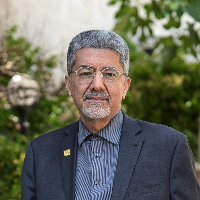The Structure and Function of Religious-Cultural Tourism and the Necessity of Integrated Management in Mashhad Metropolis
Abstract:
The city of Mashhad where Ali- ibn- Moos- al Reza (peace be upon him), the eighth Imam of twelve Shiite Imams is buried in the second large city after Tehran in the country with population of 2,427,316 as of November 2005. The functions and the structures of the spiritual (social and cultural) and material life (economical and spatial) of the city, originated from such religious-cultural bases. In which the Astan - Qhods - Razavi sanctity encouraged the Moslems pilgrimages (mostly Shiite) world during different decades to come to this city. Mashhad after the Islamic Revolution in Iran by applying facilities and necessary opportunities also relative immunity as compared to the other parts of the country due to the imposed war injuries and reinforcing of the faith, religion, the number of religious-cultural domestic tourists is increased to 32,808,213 and international tourists to 694, 473 in 2006. This city which is the economical polar of the eastern part of the country not only is the main tourism city of Iran, but also is worthy of attention in the aspect of religious-cultural tourism in the Islamic World. The method of information gathering was carried out based on library documentation and also field study (observation, questionnaire, interview, and…) in which the SPSS software was assessed for analyzing and evaluating of the data and ARC GIS software was used for special analysis. The present research is carried out in aspect of systemic theory and functionology of the basic.The main goal is how we can utilize religious-cultural tourism benefits, while reducing the undesirable effects of it, considering to profit by sustainable urban and region. In this regard our analyzing shows that the religious-cultural tourism of Mashhad urban have a special type of functions and the structures, so it attracts different activities, public utility and volunteer and philanthropic participation and different religious groups, especially during the year, particularly in religious and ancient celebration, and in leisure, attracts the groups of pilgrimages and different religious and cultural tourists from different economical groups(the poor and the rich). Therefore, utilization of the economical, social, cultural religious tourism-cultural positive effects encountered Mashhad to different environmental, social, and cultural unsustainable and also informal settlement, the main ecologic and social-and cultural instabilities of Mashhad, is increasingly growth of the population also breaking of urban management, that is lack of integrated management of Astan- Ghods- Razavi with governmental and non- governmental organizations.Therefore, it deserves to constitute a powerful organization consists of above-mentioned interactive, and profit by systematic connection of the details about tourism, religious and cultural functions in favor of reinforcing and more proficiency based the urban and region sustainable development, considering tourism functions.
Language:
Persian
Published:
Geography and Development Iranian Journal, Volume:6 Issue: 11, 2008
Page:
13
magiran.com/p510342
دانلود و مطالعه متن این مقاله با یکی از روشهای زیر امکان پذیر است:
اشتراک شخصی
با عضویت و پرداخت آنلاین حق اشتراک یکساله به مبلغ 1,390,000ريال میتوانید 70 عنوان مطلب دانلود کنید!
اشتراک سازمانی
به کتابخانه دانشگاه یا محل کار خود پیشنهاد کنید تا اشتراک سازمانی این پایگاه را برای دسترسی نامحدود همه کاربران به متن مطالب تهیه نمایند!
توجه!
- حق عضویت دریافتی صرف حمایت از نشریات عضو و نگهداری، تکمیل و توسعه مگیران میشود.
- پرداخت حق اشتراک و دانلود مقالات اجازه بازنشر آن در سایر رسانههای چاپی و دیجیتال را به کاربر نمیدهد.
In order to view content subscription is required
Personal subscription
Subscribe magiran.com for 70 € euros via PayPal and download 70 articles during a year.
Organization subscription
Please contact us to subscribe your university or library for unlimited access!



